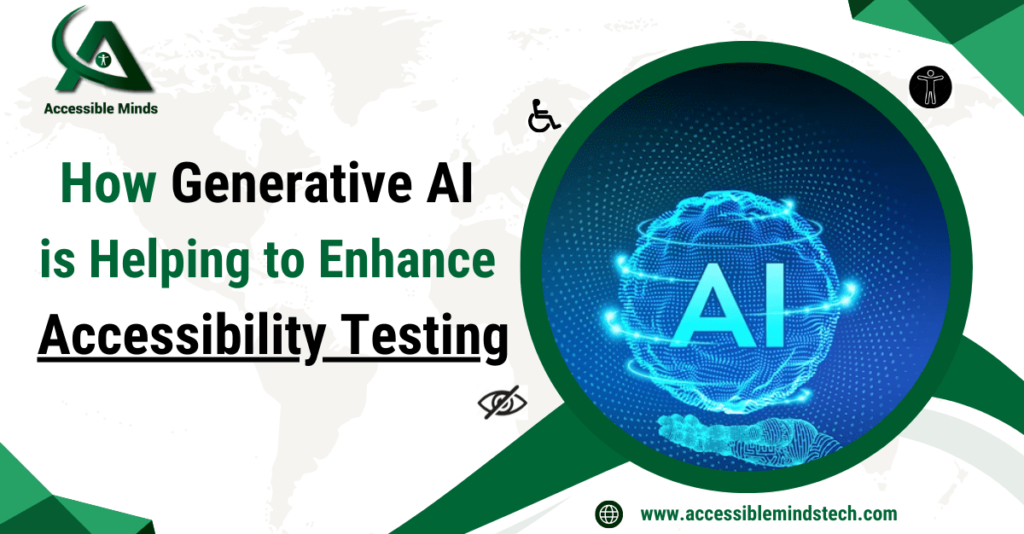Introduction
In recent years technology has made significant strides in creating a more inclusive world for people with disabilities. One groundbreaking innovation that has been driving this progress is Generative Artificial Intelligence (AI). By leveraging the power of Generative AI accessibility testing has been transformed leading to a new era of inclusivity in the digital landscape. In this blog, we will explore how Generative AI is playing a pivotal role in enhancing accessibility testing, breaking barriers and making the online world more accessible to all.
Understanding Accessibility Testing
Accessibility testing involves evaluating digital products such as websites, applications, and software to ensure they are usable and navigable by people with disabilities. It aims to identify and rectify any barriers that could prevent individuals with visual, auditory, cognitive, motor, or other impairments from accessing and interacting with digital content effectively.
Traditionally, accessibility testing has been a manual and time-consuming process, often conducted by experts who possess a deep understanding of various disabilities and assistive technologies. However, with the advent of Generative AI, this process has been revolutionized, making it more efficient, accurate, and scalable.
Automating Accessibility Testing with Generative AI
Generative AI involves the use of machine learning algorithms to create new and innovative content. In the context of accessibility testing, Generative AI algorithms are trained to understand accessibility guidelines, international standards (such as WCAG), and the specific needs of different user groups.
These AI-powered tools can automatically scan websites and applications, simulating the interactions of users with disabilities. By doing so, they can identify potential issues related to screen readers, keyboard navigation, colour contrast, form elements, and other critical aspects of accessibility. The AI algorithms can analyze vast amounts of data rapidly, providing developers with detailed reports on areas that require improvement.
Enhancing Accuracy and Coverage
Generative AI’s ability to process large datasets and simulate interactions with various disabilities significantly enhances the accuracy and coverage of accessibility testing. It can identify both common and obscure issues that might be missed during manual testing. As a result, developers can rectify these issues before the final release, ensuring a more inclusive user experience.
Personalization for Individuals with Disabilities
One of the most promising aspects of Generative AI in accessibility testing is its potential for personalization. AI algorithms can learn from individual user interactions and preferences, enabling the creation of tailored accessibility solutions. For example, an AI-powered accessibility tool could adjust text size, font styles, or navigation options based on an individual’s specific needs, making the digital experience more comfortable and accommodating for everyone.
Collaborative Accessibility Testing
Generative AI fosters collaboration between designers, developers, and testers, streamlining the accessibility testing process. These AI-powered tools can generate comprehensive reports that highlight accessibility issues, facilitating clear communication between stakeholders and ensuring that accessibility becomes an integral part of the development cycle.
Conclusion
Generative AI has emerged as a game-changer in the realm of accessibility testing and VPAT’s developing services. Automating and enhancing the accuracy of the testing process empowers developers to create digital products that are truly inclusive and cater to the diverse needs of users with disabilities. As we embrace this new era of inclusivity, Generative AI will continue to play a pivotal role in breaking barriers and making the digital world accessible to all, leaving no one behind in the journey of technological progress.
Incorporating Generative AI into accessibility testing is not just about compliance with regulations; it’s about fostering empathy, understanding, and a commitment to equal opportunities for every individual, regardless of their abilities. As technology evolves, let us keep pushing the boundaries of innovation to create a world where inclusivity is not an afterthought but an integral part of every digital experience.

